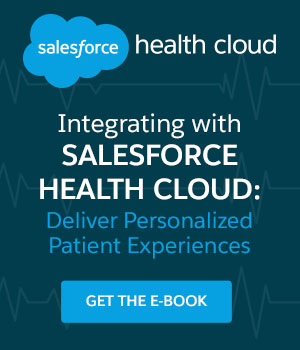
Get your FREE 30-day trial.
Please complete all fields.
No matter where you look, healthcare organization of every shape and size are transforming drastically. As technology pushes healthcare towards deeper connectivity with patients and providers, bridging the gap between data silos remains a key challenge in the industry.
Salesforce Health Cloud is tackling the challenges of healthcare in the modern era by harnessing the power and security of the cloud to deliver a holistic view of each patient’s health data and care plan. Health Cloud is the patient relationship platform providers need to build stronger 1-to-1 relationships that patients expect.
If you’re considering integrating your EMR with Salesforce Health Cloud, consider the following questions to ensure the integration process is as seamless as possible for both providers and patients.:
 1. What is the use case?
1. What is the use case?Your use case is the scenario or the process that you want to build into Salesforce. For example, you can automate management of high-risk patients or collaborative care planning. Be sure to develop the use case with input from a diverse team of business and clinical owners and IT specialists. Stakeholders includes anyone who is responsible for integration in your organization.
Your use case will inform what data is needed to streamline each scenario. For example, if you’d like to case manage condition-specific patients, you will need the problem, diagnosis or health issue information for all patients.
Once you have pinned down the data that coincides with your use case, you can determine the source system needed for the integration, such as the EHR or the scheduling, laboratory, or pharmacy information systems.
Once you’ve answered these questions, you’re ready to take a closer look at the different types of Health Care integrations available to your organization. To learn more about what those integrations look like, download the free e-book Integrating with Salesforce Health Cloud: Deliver Personalized Patient Experiences.